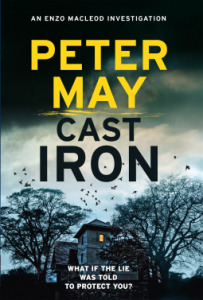 It’s always great to read an intriguing premise, one that tells you that you have to read this book and that was how I felt when I first read the blurb for The Girl Before by J.P. Delaney.
It’s always great to read an intriguing premise, one that tells you that you have to read this book and that was how I felt when I first read the blurb for The Girl Before by J.P. Delaney.
A perfect house built by an architect who will accept nothing short of perfection, or at least his version of it. The house is available to rent but not just to anyone with the cash ( and this house is a bargain), applicants must fill in a lengthy questionnaire and be approved personally by the owner/designer Edward Monkford. And it doesn’t stop there, rules (over 200 of them) must be adhered to; no clutter, no pets, no children, very few possessions. The list goes on.
This concept sets up the initial intrigue of the story. Why would anyone agree to live under such rigid conditions? But then, Edward is an unusual and intriguing man and Jane, the latest applicant has fallen under his spell as well as that of the beautiful, minimalist house.
The story is told from two points of view and in two time-frames. As Jane moves into One Folgate Street and learns more about Edward, whose wife and son tragically died, she also begins to learn something about a former tenant, Emma. So the action Goes back and forth and we see the house with Emma and boyfriend Simon in occupancy and with Jane.
As jane delves deeper into Emma’s life (and death) it becomes apparent that there are a lot of parallels between the two women. What really happened to Emma and, Jane wonders increasingly, was Edward responsible?
The story is complex. Both women have relationships with the Ice-cold Edward, both have suffered some trauma in their past. At some point I felt that the author introduced too many angles and that maybe the creepiness of the perfect house and it’s strange owner were in danger of becoming swamped by a whole gamut of other findings and revelations that made it hard to like any of the characters.
However, the book is certainly a page turner. The narrative flows easily and the short, sharp changes in viewpoint made it a fast and satisfying read. I would usually say that I love a convoluted plot with many twists and turns but, in this case, just for once, maybe a little less would have been more, just as with the house that features so prominently in the story.
Books: Publishing, Reading, Writing


 If anyone had told me that one of my first reads of 2017 would be a Zombie novel I would have said, ‘Nah! You’ve got to be joking!’
If anyone had told me that one of my first reads of 2017 would be a Zombie novel I would have said, ‘Nah! You’ve got to be joking!’ It’s always great to read an intriguing premise, one that tells you that you have to read this book and that was how I felt when I first read the blurb for The Girl Before by J.P. Delaney.
It’s always great to read an intriguing premise, one that tells you that you have to read this book and that was how I felt when I first read the blurb for The Girl Before by J.P. Delaney. *Many thanks go to Quercus books and Netgalley for an advanced review copy of this book*
*Many thanks go to Quercus books and Netgalley for an advanced review copy of this book*